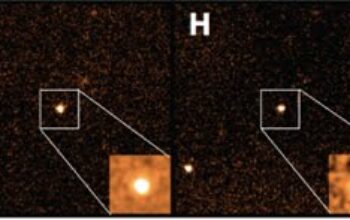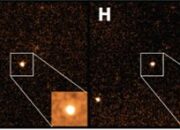Quantum locking, a mesmerizing phenomenon at the intersection of quantum mechanics and classical physics, defies the conventional laws of gravity. Often showcased in stunning demonstrations, this captivating trick involves the maintenance of stability and levitation of an object under the influence of a magnetic field. The allure of quantum locking lies not merely in its visual spectacle but also in its profound implications for technology, physics, and our understanding of the universe. This article delves into the intricacies of quantum locking, elucidating its principles, applications, and the underlying fascination it invokes.
At its core, quantum locking is enabled by the phenomenon of superconductivity. Superconductors are materials that exhibit zero electrical resistance and expulsion of magnetic fields when cooled below a critical temperature. This unique state is achieved due to the pairing of electrons into Cooper pairs, enabling them to move through the lattice of the material without scattering. It is within this superconducting regime that quantum locking manifests, leading to the stabilization of a superconductor in a magnetic field.
The quintessential demonstration of quantum locking employs a type-II superconductor, often made from a ceramic material. When placed in proximity to a magnet, this superconductor expels the magnetic field lines and creates a pinning effect through the formation of quantized vortices. These vortices, akin to tiny whirlpools within the superconductor, anchor the superconductor in place. As a result, the superconductor can achieve a state of levitation, rendering it seemingly defiant to the pull of gravity. This levitation is not merely an illusory spectacle; it embodies a complex interaction of forces that invites deep scientific contemplation.
The phenomenon of quantum locking can be illustrated through numerous engaging demonstrations, each revealing unique attributes of this quantum superposition. For instance, one of the most captivating experiments involves a superconducting disc levitating above a magnet. As the disc cools below its critical temperature, it becomes locked within the magnetic field, allowing it to float indefinitely. This scenario presents a vivid illustration of the principles of quantum mechanics in action, captivating audiences who are often moved by the sheer elegance of this non-dissipative state.
Engagement with quantum locking invariably leads to a discussion on the broader implications of superconductivity. One of the most fascinating prospects is the potential application of superconductors in the realm of transportation. Maglev trains, which utilize the principles of magnetism and levitation, can be enhanced by employing quantum locking technologies. These trains would not only achieve high velocities but also engage in energy-efficient travel due to the negligible resistance exhibited by superconductors. Moreover, the ability to achieve frictionless motion could revolutionize public transportation, potentially leading to a paradigm shift in how cities are structured and how resources are allocated.
Beyond transportation, quantum locking holds promise in the field of energy storage and transmission. Superconducting circuits are already being explored for their capacity to transmit electricity with minimal energy loss. As technology progresses, the incorporation of quantum locking may lead to even more efficient storage solutions, allowing for a dramatic decrease in waste and promoting sustainable energy use. This thrust towards efficiency is emblematic of the potential of quantum locking to not only capture our imagination but to fundamentally alter our material existence.
As one delves deeper into the world of quantum locking, the philosophical implications begin to emerge. The phenomenon challenges our intuitive understanding of reality, particularly notions of space, time, and motion. In its essence, quantum locking showcases the interplay between deterministic and probabilistic worlds—an arena where objects perform seemingly contrary actions with grace and coherence. This inversion of familiar physical laws resonates deeply with humanity’s eternal quest for knowledge and understanding, prompting inquiries that reach far beyond the confines of experimental demonstrations.
The fascination with quantum locking also bridges the gap between science and artistry. Artists and physicists alike are drawn to the visual allure of levitating superconductors. The stark contrast of the serene, suspended motion against the backdrop of a magnet stimulates a profound aesthetic appreciation, leading to interdisciplinary collaborations. As technology advances, it is likely that we will witness further artistic interpretations of quantum phenomena, marrying scientific inquiry with cultural expression.
Moreover, the phenomenon encourages a broader dialogue about the role of science in society. As audiences experience the marvel of quantum locking, it begs the question of how such principles can be translated into public understanding and policy. Education around quantum technologies is paramount; uninformed responses can lead to skepticism surrounding scientific advancements. Thus, engaging narratives that captivate public interest while simultaneously elucidating complex scientific concepts is essential for fostering informed discourse.
In conclusion, quantum locking is a phenomenon that transcends mere visual intrigue; it encapsulates the rich tapestry of scientific inquiry, technological potential, philosophical contemplation, and artistic expression. As we stand on the brink of breakthroughs rooted in quantum mechanics, the allure of quantum locking serves as a reminder of the wonders that await humanity in the pursuit of knowledge. As we embrace this levitation trick that’s more than magic, we open ourselves to a future where understanding the fabric of reality may lead to innovations that reshape our world.










